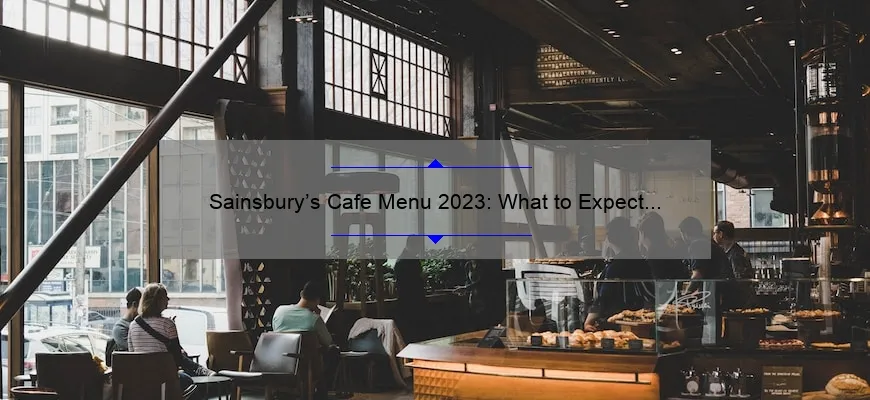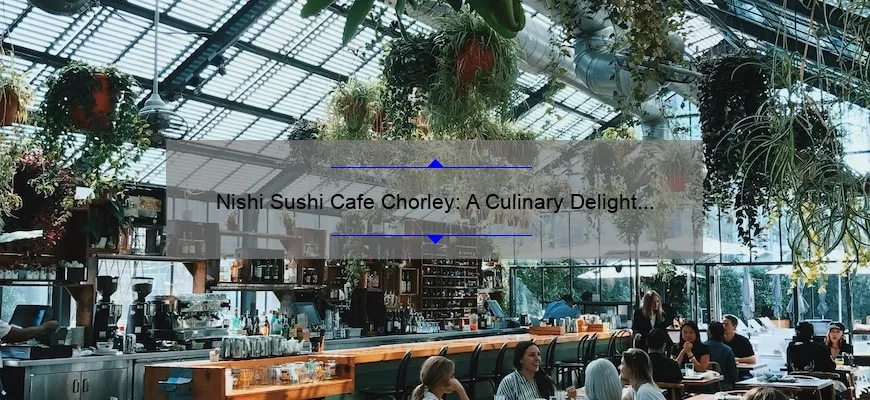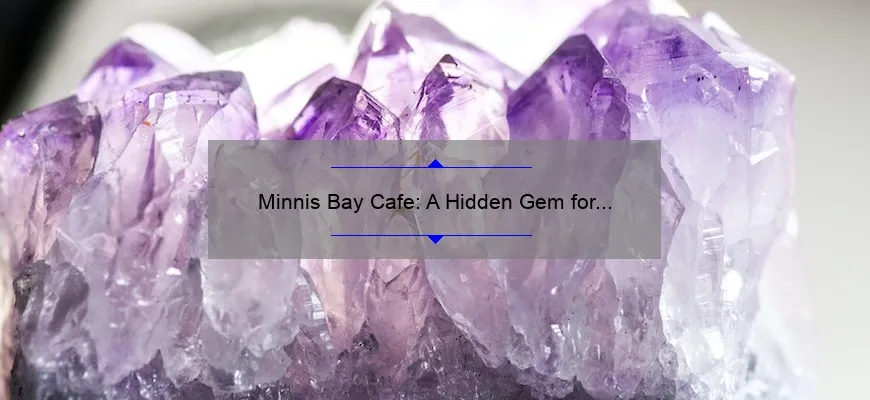- Short answer: Kawasaki cafe racer
- Exploring the World of Kawasaki Cafe Racers: A Comprehensive Guide
- How to Build a Kawasaki Cafe Racer: Step-by-Step Instructions and Tips
- FAQs about Kawasaki Cafe Racers Answered: Everything You Need to Know
- Unveiling the Beauty of Kawasaki Cafe Racer Modifications: Enhancing Performance and Style
- Mastering the Art of Maintaining a Kawasaki Cafe Racer: Expert Advice and Essential Tips
- The History and Legacy of Kawasaki Cafe Racers: From Classic Models to Modern-Day Icons
Short answer: Kawasaki cafe racer
The term “Kawasaki cafe racer” refers to a motorcycle that is modified or built based on a Kawasaki model with the intention of achieving the classic and stylish look of a cafe racer. These motorcycles typically feature stripped-down designs, low-mounted handlebars, rear-set footpegs, and customizations such as shorter fenders and an aftermarket exhaust system. They aim to provide a nostalgic riding experience blended with modern performance.
Exploring the World of Kawasaki Cafe Racers: A Comprehensive Guide
Welcome to our comprehensive guide on exploring the exhilarating world of Kawasaki Cafe Racers! In this blog post, we will take you on a journey filled with professional insights, witty anecdotes, and clever explanations to help you understand and appreciate these iconic motorcycles.
Kawasaki has a rich history in motorcycle manufacturing, with their Cafe Racers standing out as true highlights. With sleek designs and bold performance capabilities, these machines have captured the hearts of riders worldwide. So grab your helmet and brace yourself for an adventure into the legendary realm of Kawasaki Cafe Racers!
First things first – what exactly is a Cafe Racer? Originating from post-World War II Britain, this motorcycle style quickly gained popularity among thrill-seekers looking for speed and adrenaline-fueled rides. Cafe Racers were originally modified bikes to race between cafes, making them lightweight yet powerful enough to leave competitors in their dust.
Nowadays, the legacy lives on, and one brand that has truly mastered the art of creating showstopping Cafe Racers is none other than Kawasaki. With their commitment to innovation and engineering excellence, they have produced an impressive range of models designed to evoke a sense of nostalgia while delivering modern performance.
Let’s delve further into some specific Kawasaki Cafe Racers that command attention:
1. Kawasaki Z900RS Cafe: This beast takes inspiration from the iconic Z1 Super Four model from the 1970s. With its lush glossy paintwork contrasting against brushed metallic finishes, retro vibes ooze from every angle. But don’t let its vintage looks fool you; beneath that classic exterior lies an engine boasting impressive horsepower figures along with advanced electronics ensuring a smooth ride.
2. Kawasaki W800 Cafe: If pure elegance is what you seek in a cafe racer, then this is your dream machine! Impeccable craftsmanship meets exceptional power in this model featuring classic styling cues such as wire-spoke wheels and blacked-out engine cases reminiscent of yesteryears. This W800 Cafe truly defines the spirit of timeless design.
3. Kawasaki Ninja 300 Cafe Racer: For those eager to dip their toes into the world of cafe racers, the Ninja 300 offers an ideal entry point. With its lightweight structure and eye-catching graphics, this sleek machine is perfect for urban rides or tackling twisty mountain roads with confidence. Let’s not forget about its affordability factor, making it even more enticing!
Now that we’ve highlighted a few notable Kawasaki Cafe Racers, it’s essential to understand why these motorcycles continue to captivate enthusiasts around the globe. Their ability to flawlessly blend vintage aesthetics with cutting-edge technology and performance is what sets them apart from other bikes in the market.
Kawasaki Cafe Racers are not just about appearances; they offer an immersive riding experience that words can hardly describe. Picture yourself leaning into sharp bends with ease as you feel the powerful engine roaring beneath you, effortlessly channeling your inner Steve McQueen or Marlon Brando.
There you have it! Our comprehensive guide on exploring the world of Kawasaki Cafe Racers has taken you through a journey where professional knowledge meets witty storytelling and clever explanations. From their origins in post-war Britain to the remarkable models that grace our streets today, these motorcycles continue to leave an indelible mark on motorcycle culture.
So whether you’re a seasoned rider or someone looking for a taste of adventure on two wheels, don’t hesitate to dive deeper into exploring Kawasaki Cafe Racers – it’s a decision you won’t regret! Fuel your passion for speed, style, and unforgettable experiences by embracing all that these magnificent machines have to offer. Happy riding!
How to Build a Kawasaki Cafe Racer: Step-by-Step Instructions and Tips
Have you ever dreamt of building your own Kawasaki Cafe Racer? Well, we have got you covered! In this step-by-step guide, we will take you through the process of creating your very own custom bike that is guaranteed to turn heads.
Step 1: Finding the Perfect Base Bike
Before diving into the build, it’s crucial to find a suitable base bike. For a Kawasaki Cafe Racer, models like the Z650 or the GPz550 are excellent choices due to their lightweight frames and powerful engines. Look for bikes with clean titles and minimal rust to make your life easier during the transformation.
Step 2: Stripping it Down
Once you’ve found your ideal base bike, it’s time to strip it down to its bare bones. This means removing all unnecessary components like fenders, lights, and mirrors. Be methodical in this process and keep all parts organized and labeled – trust us; it will save you significant headaches later on.
Step 3: Designing Your Dream Cafe Racer
Now comes the fun part – designing your dream cafe racer! Take inspiration from classic cafe racers or modern-day customs. Consider elements such as an elongated fuel tank, low-seat design, clip-on handlebars, and a rear cowl. Sketch out different variations until you find the perfect aesthetic that resonates with your vision.
Step 4: Upgrading Suspension and Brakes
To achieve optimal performance on both straightaways and corners, upgrading the suspension components is essential. Replace old forks with stiffer ones for improved handling and consider installing adjustable rear shocks for added comfort during long rides. Additionally, upgrading the brakes system with performance calipers will enhance stopping power when needed most.
Step 5: Rebuilding Engine for Power
A true cafe racer needs some serious power under its hood. Take this opportunity to rebuild or modify your engine for increased horsepower by swapping stock exhaust systems for aftermarket headers and fitting a performance air filter. Upgrade carburetors or fuel injectors to enable efficient fuel delivery, ensuring your Kawasaki roars to life on every twist of the throttle.
Step 6: Fabrication and Customization
Now comes the time for fabrication and customization. Work with specialized workshops or experienced fabricators to craft unique parts like an aluminum gas tank, custom-made subframe, or cafe racer seat. Don’t forget to invest in high-quality paintwork that complements your overall design – a well-executed paint job can elevate your build from great to exceptional.
Step 7: Electrical System Overhaul
A cafe racer’s electrical system not only keeps you connected but also contributes to its aesthetic appeal. Invest time in tidying up wiring harnesses, ensuring they are tucked away neatly. Install modern LED lights, add a minimalist speedometer, and wire up any additional accessories you desire. Remember, simplicity is key in creating that sleek and clean look.
Step 8: Final Touches
Congratulations! Your Kawasaki Cafe Racer build is almost complete. Take this opportunity to fine-tune all components such as brake settings, handlebar position, suspension adjustments, and wheel alignment. It may take some trial and error before achieving optimal performance but persevere – it will be worth it in the end.
Step 9: Safety First – Gear Up!
Before hitting the open road on your newly built beauty, prioritize safety by investing in proper riding gear. A full-face helmet, protective jacket with armor inserts, gloves, pants with reinforced knees are essential items that not only protect but also complete the quintessential cafe racer look.
So there you have it! By following these step-by-step instructions with attention to detail and skillful execution, you’ll be cruising through town on your Kawasaki Cafe Racer in no time. Embrace the custom builder journey; after all, it’s about more than just building a motorcycle – it’s about creating a truly unique and personal piece of art on wheels.
FAQs about Kawasaki Cafe Racers Answered: Everything You Need to Know
If you’re a motorcycle enthusiast, chances are you’ve heard of Kawasaki cafe racers. These stylish and powerful machines have become icons in the biking world, captivating riders with their sleek design and adrenaline-inducing performance. However, if you’re new to this exciting scene, you may have some burning questions about these legendary bikes. Worry not! We’ve got you covered with our comprehensive guide to everything you need to know about Kawasaki cafe racers.
1. What is a cafe racer?
Let’s start with the basics. A cafe racer is defined by its stripped-down design and emphasis on speed and maneuverability. Originating in the UK in the 1950s and 60s, these bikes were modified by young Britons who aimed to replicate the speed of factory racing motorcycles while still being practical for everyday use. Often seen parked outside cafes or racing between them on city streets, these motorcycles earned their name: “cafe racers.”
2. Why choose a Kawasaki cafe racer?
Kawasaki has an illustrious history when it comes to building exceptional motorcycles, and their Cafe Racer series is no exception. Known for their precise handling, aggressive styling, and powerful engines, Kawasaki cafe racers offer thrills both on the open road and during spirited rides through winding city streets. With these bikes, you can enjoy the best of both worlds: a classic aesthetic combined with cutting-edge technology.
3. Which models are available in Kawasaki’s Cafe Racer lineup?
Kawasaki offers several models that cater to different tastes and preferences within the cafe racer genre:
– Z900RS Cafe: This model pays homage to the original Z1 Super Four from 1972 while incorporating modern engineering advancements.
– Z1000R: Boasting high-performance features and incredible agility, this model delivers an exhilarating riding experience.
– W800 Cafe: Inspired by classic British motorcycles of yesteryears, this bike combines nostalgic charm with Kawasaki’s reliability.
– Z650 Cafe: Perfect for those seeking a more accessible cafe racer experience, this bike combines power and affordability.
4. Are Kawasaki cafe racers suitable for beginners?
Kawasaki offers a range of cafe racer models designed to cater to different skill levels. While some models like the Z1000R may be better suited for experienced riders, others like the Z650 Cafe are beginner-friendly due to their manageable power delivery and approachable handling characteristics. Ultimately, your choice should depend on your riding experience and confidence level.
5. What modifications can I make to my Kawasaki cafe racer?
One of the most exciting aspects of owning a cafe racer is the ability to customize it according to your personal style and preferences. Whether you wish to upgrade the exhaust system for a throatier sound or enhance performance with aftermarket components, there’s a wide array of accessories available specifically designed for Kawasaki cafe racers. From handlebars and footpegs to seat covers and fairings, you have endless possibilities to transform your bike into a unique machine that reflects your personality.
In conclusion, Kawasaki cafe racers combine style, power, and heritage in an irresistible package. With their rich history, thrilling performance capabilities, and customization options, these motorcycles continue to captivate enthusiasts worldwide. So whether you’re looking for an entry-level model or crave the exhilaration of a high-performance beast, there’s undoubtedly a Kawasaki cafe racer that will get your heart racing every time you hit the road!
Unveiling the Beauty of Kawasaki Cafe Racer Modifications: Enhancing Performance and Style
In the world of two-wheeled wonders, there is a certain breed of motorcycles that captivate the attention of riders and onlookers alike – the Kawasaki Cafe Racers. With their sleek lines, powerful engines, and retro-inspired designs, these machines have gained a loyal following over the years. But what if we told you that you can take your Kawasaki Cafe Racer to new heights by indulging in some modifications? That’s right – we’re here to unveil the beauty of Kawasaki Cafe Racer modifications and uncover how they enhance both performance and style.
When it comes to enhancing performance, there are several key areas where modifications can make a significant impact. First and foremost, let’s talk about the engine. By upgrading components such as air filters, exhaust systems, and fuel injection modules, you can unlock hidden power within your machine. These modifications not only increase horsepower and torque but also improve throttle response and overall engine efficiency.
But it’s not just about raw power; handling is equally important when it comes to unleashing the true potential of your Kawasaki Cafe Racer. Upgrading suspension components like shocks and forks can dramatically improve the bike’s stability and cornering capabilities. Coupled with high-performance tires that provide optimum grip on both wet and dry surfaces, your machine will transform into a nimble beast ready to conquer any road.
Now let’s move on to style – because let’s face it, appearance matters! One of the most notable features on any cafe racer is its distinctive seat design. By swapping out your stock seat with a custom-made or aftermarket one, you can instantly elevate its visual appeal while also providing improved comfort for those long rides.
Additionally, customizing your Kawasaki Cafe Racer means paying attention to details that will set yours apart from the crowd. From personalized paint jobs showcasing unique color schemes or metallic finishes to adding tasteful decals or pinstripes that add an extra touch of flair – the possibilities are endless. Don’t shy away from experimenting with different materials, such as carbon fiber or aluminum, when it comes to modifications like fenders, fuel tanks, or fairings. These lightweight options not only enhance the overall aesthetics but also contribute to improved aerodynamics.
Nowadays, technology plays a crucial role in enhancing both performance and style in motorcycles. Upgrading to modern digital instrument clusters not only adds a futuristic touch but also provides accurate speed readings and vital information at a glance. And for that extra touch of convenience and safety, consider adding LED lights that not only illuminate the road ahead but also ensure you’re visible to other motorists.
Ultimately, the beauty of Kawasaki Cafe Racer modifications lies in the journey of customizing your machine according to your personal preferences. Whether you aim for a vintage-inspired classic look or a futuristic interpretation of this iconic style – it’s all about creating a bike that truly reflects your individuality.
So why wait? Unleash the true potential of your Kawasaki Cafe Racer by embracing carefully chosen modifications that enhance both performance and style. Remember, it’s not just about turning heads on the streets; it’s about achieving the perfect balance between form and function – making each ride an unforgettable experience for both you and those fortunate enough to witness your masterpiece.
Mastering the Art of Maintaining a Kawasaki Cafe Racer: Expert Advice and Essential Tips
As any motorcycle enthusiast knows, there is a certain thrill that comes with owning and maintaining a cafe racer. And when it comes to the world of cafe racers, Kawasaki has carved its own niche as one of the most reputable and beloved brands. With their sleek design, powerful engines, and timeless appeal, Kawasaki cafe racers have long been a favorite among riders looking for both style and performance.
But what goes into truly mastering the art of maintaining a Kawasaki cafe racer? From expert advice to essential tips, here are some key pointers to ensure your bike remains in peak condition and continues to provide you with an exhilarating ride.
1. Invest in Quality Parts
When it comes to maintaining your Kawasaki cafe racer, cutting corners on parts is simply not an option. Investing in high-quality components will not only guarantee better performance but also ensure longevity and safety. Opting for genuine OEM (Original Equipment Manufacturer) parts specifically designed for your model is always advisable. While aftermarket options may seem cheaper initially, they often fall short when it comes to durability and reliability.
2. Regular Maintenance Checks
Just like any machine, regular maintenance checks are essential for keeping your Kawasaki cafe racer running smoothly. This includes regular oil changes, chain lubrication, brake inspections, tire pressure checks, and fluid level monitoring. Establishing a routine maintenance schedule will help you catch potential issues early on before they become major setbacks.
3. Keep It Clean
Maintaining the aesthetics of your Kawasaki cafe racer is just as important as ensuring its mechanical excellence. Regularly washing your bike not only helps preserve its beauty but also allows you to spot any hidden damages or wear that might go unnoticed otherwise. Be sure to use proper cleaning products suitable for motorcycles and avoid spraying water directly onto electrical components.
4.Tune-Up Your Carburetor
Cafe racers are known for their exceptional throttle response and power delivery – attributes largely influenced by carburetion systems. Keeping the carburetor in top shape is pivotal for optimal performance. Regular cleaning and tuning will help with fuel efficiency, responsiveness, and overall engine health. Consulting a professional mechanic or following the manufacturer’s guidelines is highly recommended.
5. Master Basic DIY Repairs
While it’s always advisable to consult experts when facing major mechanical issues, learning basic DIY repairs can save you time and money in the long run. Familiarize yourself with common troubleshooting techniques such as fixing electrical connections, adjusting brakes, replacing bulbs, and handling simple engine adjustments. There are numerous online resources and guides available that can equip you with essential knowledge.
6. Protective Gear and Safe Riding Practices
Maintaining a Kawasaki cafe racer is not just about the bike itself; it also involves taking care of your own safety. Wearing proper protective gear, including a helmet, gloves, jacket, pants, and boots tailored for motorcycle riding, is crucial at all times. Additionally, practicing safe riding habits such as obeying traffic rules, maintaining appropriate speed limits, and staying vigilant on the road can significantly reduce the risk of accidents.
In conclusion, mastering the art of maintaining a Kawasaki cafe racer requires a combination of expert advice and essential tips. By investing in quality parts, carrying out regular maintenance checks, keeping your bike clean and tuned-up properly using professional guidance when needed but also being able to handle basic repairs on your own – you’re well on your way to enjoying countless thrilling rides on your beloved machine while ensuring its longevity and optimal performance for years to come!
The History and Legacy of Kawasaki Cafe Racers: From Classic Models to Modern-Day Icons
The roaring engines, sleek designs, and adrenaline-fueled rides of Kawasaki cafe racers have captured the hearts of motorcycle enthusiasts for decades. With their rich history and enduring legacy, these bikes have become more than just a mode of transportation – they have emerged as icons in the world of motorcycling. In this blog post, we will delve into the fascinating journey of Kawasaki cafe racers from their humble beginnings to their status as modern-day legends.
The roots of Kawasaki cafe racers can be traced back to the rebellious spirit of British motorcyclists in the 1950s and 1960s. Inspired by speed and style, these riders transformed their motorcycles into lean, mean racing machines. The term “cafe racer” was born from their habit of racing from one cafe to another, pushing both themselves and their bikes to the limit.
Kawasaki entered this scene in the late 1960s with its iconic models such as the Kawasaki W800 Cafe Racer. These bikes immediately caught the attention of riders with their powerful engines and distinct design elements. Featuring low-slung handlebars, rear-set footpegs, and a streamlined appearance, these machines were built for speed and agility.
One standout model that still holds a special place in many rider’s hearts is the Kawasaki Z1R TC Turbo. Introduced in 1978, it showcased cutting-edge technology with its innovative turbocharging system. This marked a turning point for Kawasaki cafe racers and solidified their reputation as pioneers in motorcycle engineering.
Throughout the years, Kawasaki continued to push boundaries with its ever-evolving lineup of cafe racers. The introduction of critically acclaimed models like the GPz900R Ninja further cemented their position as game-changers in the industry. With its unrivaled power output and futuristic design elements, it became an instant classic that set new standards for performance motorcycles.
As we fast forward to present times, modern-day Kawasaki cafe racers maintain the spirit and legacy of their predecessors while incorporating the latest technological advancements. The Kawasaki Z900RS Cafe is a shining example of this harmonious blend of old and new. Combining retro styling cues with modern features like traction control and multiple riding modes, it appeals to nostalgic riders seeking a dose of classic charm, without compromising on performance.
The enduring popularity of Kawasaki cafe racers can be attributed to their ability to embody both style and substance. Each model tells a story – from the rebellious origins in British cafes to the cutting-edge technology that defines them today. These bikes have become more than mere machines; they represent freedom, individuality, and the pursuit of thrilling rides.
In conclusion, the history and legacy of Kawasaki cafe racers are deeply rooted in the rebellious spirit of British motorcycling culture. From classic models like the W800 Cafe Racer to modern-day icons such as the Z900RS Cafe, these bikes have consistently pushed boundaries and captivated riders worldwide. With their timeless designs, exhilarating performances, and unwavering popularity, Kawasaki cafe racers will undoubtedly continue to leave an indelible mark on motorcycle history for years to come.







